| Applications | |
Tsunami in Japan
Japan committed a big mistake to have listed nuclear power plant as a sustainable development which proved to be of no more sustainable happiness |
|
 |
|
|||||
I was given the title of this article “How Japan is managing the disaster of this magnitude?” by the Coordinates magazine but I dare to say that Japan is not yet managing the disaster but suffering from the hardships. Though all Japanese people are in mourning the sorrow, I feel it should be my duty as an old scholar to report on the biggest earthquake and Tsunami to the rest of the world. I hope that my report would be useful to prevent the similar misery.
What happened?
At 2:46 pm on the 11th March 2011, the huge earthquake of M 9.0 (firstly it was 8.8) occurred offshore of Sanriku (north east of Japan) of which epicenter was 500 km long (north-south) and 200 km wide (east-west) in the Pacific Ocean (see Fig.1). Accordingly the damaged areas were also 500km long including a part of Hokkaido (the north island of Japan) to Tokyo. We had many big earthquakes in the past, for example, Kobe Great Earthquake occurred in 1995 but the area of the damage was limited in several 10 km. I was at my house located in the west of Tokyo at the time of the earthquake when I felt danger to stay in my room and jumped out of my house together with my wife. The shaking continued for almost 3 minutes (normally one minute long even in the case of very big earthquake) and repeated many times even after the earthquake. After the earthquake was settled a little bit I switched on TV and came to know that very serious damages were anticipated in the Tohoku Area (north east of Japan) and Tsunami would be coming soon.
The damages are as follows; 10,0489 dead (confirmed so far), 16,621 missing (still increasing), 2,777 injured, 144,194 houses destroyed, 245,689 evacuated, 2,200 road damages, 56 bridges dropped, 6 fuel power stations stopped, Tohoku Shinkansen and Tohoku Highway seriously damaged (as of 26th March, 15 days after the earthquake). The main damages were from Tsunami which swept away huge number of people, cars, houses, fishing boats, ports and harbors see (Fig.2a and 2b). Quickly measured height of Tsunami is as follows; 23 m at O-funato, 16 m at Minami Sanriku, 15 m at Onagawa, 14 m at Fukushima nuclear power plant area, 13 m at Kuji port, 7~8 m at Kamaishi, 5 m at O-arai etc. The Tsunami hit small coast towns 5 km upstream along river as Sanriku Area has special topography of V shape bay which exaggerates the height of Tsunami. Along the River Kitagami, 5 m Tsunami attacking at the outlet swept away all harbor facilities and boats, at 4 km point a bridge fell down, at 6 km riverside villages were flooded, at 14 km agriculture fields inundated and at 49 km point of water level gauge station the water level suddenly raised by 10 cm one hour after the earthquake. It would be unexpected to have such Tsunami propagation.
The most serious accident was the destruction of the Fukushima Nuclear Power Plants of which cooling system and electric and electronic facilities were completely damaged by Tsunami (see Fig.3). It resulted in the extraordinary heat up of the nuclear reactors and protected vessels. The atomic radiation was spilled out which polluted air, water and soil including vegetables and milk. People within 20 km radius had to move out of the residence and people within 20 ~ 30 km had to be inside of their houses. The total numbers of evacuated people were 450,000 at maximum not only from the earthquake and Tsunami but also from the nuclear power plant accident. They had to stay at congested houses without light, heater, water, foods, blankets, etc. in spite of cold night of below zero temperature until supporting materials had arrived.
Tokyo, the metropolitan area was also under panic as all trains and subways were stopped which made several million people impossible to go back home or very difficult to move. After 30 minutes from the earthquake, all drinks and foods were sold out at every shop. From the next day, water, foods, toilet papers, etc were also sold out at super markets, department stores, convenient stores and so on. Electricity failures were also started as the electric power stations stopped the operation which brought shortage of electricity. Tokyo Electric and Power Supply Company (TEPCO) had the capacity of 52 million KW before the earthquake which reduced to 31 million KW after the disaster.
Fukushima Nuclear Power plant was providing about 9 million KW. Serious was the shortage of gasoline as the oil refinery facilities were also damaged. Almost all gas stations and tanks were swept away in the coast areas. It was a big trouble as we could not transport relief supplies to the damaged sites because of lack of gasoline. Even in Tokyo after two weeks, we have to make queue to wait for an hour for gasoline supply which is limited only 10 litters. In addition, almost all ports were damaged by Tsunami, roads and railways were not usable. Only helicopters of the defense agency were rescue parties. Mobile phones and Internet at the sites were not available for long days which made difficult to communicate between safe and damaged areas as well as among family and relatives. Many of survivors lost their mobile phones too. Even with mobile phones, they could not use them as electric services were completely stopped.
Lessons from the past disasters in Japan
Japanese people were well educated about the evacuation from earthquakes and Tsunami as there were so many terrible disasters occurred in the past. Particularly the area of Sanriku was heavily damaged by the Great Tsunami in 1896 which killed almost 22,000 people including my great grandfather. According to this miserable lesson, many coast towns prepared the construction of water break against Tsunami. For example, Kamaishi City, Iwate Prefecture constructed huge water breaks with 2 km long with 20 m thickness, 8 m height of the crust above the sea level and 65 m depth which has been registered as the deepest water break in Guinness World Records (see Fig.4a and 4b). Taro fishery village, Miyako District, Iwate Prefecture constructed 10 m high water break against Tsunami as the village was most seriously damaged by 1896 and 1933 Tsunami. But those water breaks were completely destroyed by Tsunami this time. The Tsunami was 14 m high this time much higher than the preparedness. Many people said that the Tsunami was beyond the estimation but the Tsunami in 1896 was 38 m high! We should have lessons that the hardware including very high water break cannot rescue people but we need software including how to provide early warning and evacuation system.
In the case of Kobe Earthquake occurred in 1995 which killed more than 6,000 people the establishment of GIS database was so important to recover from the damages. Many local governments started GIS database but everything including computers, databases, backups, even city and town halls/offices were swept away. Most of people lost ID card and passport which made difficult to identify with documented evidence. In several towns, the official registration data bases were also lost as well as town offices.
The world experienced a devastating disaster on 11th March 2011, first the Earthquake of a very high magnitude and afterwards a massive Tsunami. Some authorities say that ‘the magnitude was near the “Black Swan” category’, and the travel time of the wave to the coast was reported to be only about 10-15 minutes, insufficient to inform the nearby communities of the impending disaster. These are conditions where even the most advanced Early Warning System (EWS) cannot make a significant difference. Therefore, the potential to mitigate such disasters in the future will have to be based on vulnerability reduction by adaptation, e.g. in urban planning and construction, based on risk and vulnerability maps.
Another question is the quality and coordination of disaster mapping activities to support response measures. Here it will be necessary to coordinate all efforts in the preparation of adequate Geoinformation on a global scale, as most of the disasters nowadays are not limited by national or regional boundaries. We believe that Geoinformation technologies developed for the purposes of disaster monitoring and management can contribute to assisting all facets of disaster management and alleviating their impacts for such purposes as the rescue of victims. Lastly everyone in the world must learn from the Japanese experiences, their calm behavior in the face of such a devastating event, without losing their well-known disciplined manner.
Lessons from the disaster
First of all, I have to say that there is nothing absolutely safe. Though many Japanese doubted the safeness of nuclear power plant, Japanese government and industry oriented people supported the construction of nuclear power plants as the safety was absolutely reliable. In spite of allergy against atomic matters as Japan was only nation who experienced atomic bombs, majority of local people accepted the construction of nuclear power plants through voting procedure. Electric power companies and consultants always said that the power cost should be cheapest in the case of nuclear power. But now we Japanese realized that the cost was tremendously high, and in addition, the accident is robbing of the life and land more than 250 km wide (Tokyo 250 km apart from the Fukushima Nuclear Power Plant is now under danger of drinking water due to the atomic radiation). We are learning how difficult, complicate and time taking to prevent the accident of nuclear plants.
Many local people have made mistakes and misjudge though they were lessons from their ancestors how to evacuate from Tsunami. But some of people did not have enough knowledge about Tsunami behavior. For example, Asahi City, Chiba Prefecture located at sea coast was attacked by the first Tsunami at 3:45 pm, one hour after the earthquake when local people succeeded to evacuate on a hill. After Tsunami withdrew, some people went down to their houses or the coast, even some people tried to fill their cars with gasoline. But the second Tsunami came at 4:20pm, 35 minutes after the first Tsunami when such people were swept away and died. After the withdrawal of the second Tsunami, survived people wanted to search for those victims in the city area near the coast as they did not think that Tsunami came again. Unfortunately the third Tsunami, even highest one attacked at 5:26 pm, an hour after the second Tsunami which killed the rest people. One of the survivors said that there would not be any more Tsunami after the second one. The attacking time of Tsunami and repetition were different place by place. The earliest Tsunami was 15 minutes after the earthquake while most Tsunami came 30 minutes after. But we Japanese did know that some time it took long time until Tsunami came. For example big Tsunami of 6 m high attacked Sanriku Area 22 hours after the Great Earthquake occurred in Chile in 1960, which killed 142 people. NHK TV immediately announces whether we have to prepare the attack by Tsunami or not every after big earthquake. At this time many people evacuated second floor or third floor of concrete buildings. It would or should be safe. But the height of Tsunami came up to fifth floor and its roof the was only safe place.
In Japan, any local governments must produce hazard risk map which shows the place of refuge or shelter and guiding roads. Some villagers followed the guide map which have helped them to save themselves but in some other cases they were not successful as the estimated Tsunami was smaller than the actual one. There was an interesting report in which Sumo Hama. Miyako District, Iwate Prefecture succeeded to evacuate 109 people out of 110 villagers on a safe hill even though the village had no water break against Tsunami. Those villagers used to exercise the rehearsal of evacuation from Tsunami every year including communication among villagers and evacuation routing. At a primary school called Funakoshi Primary School located in Yamada Town, Iwate Prefecture, the school itself was designated as a place of shelter as it is located at 13 m above the sea level. 176 school children were evacuated to this school at first, but Mr Shuzo Tashiro (55), a school helper judged the shelter was not enough when he saw the Tsunami wave at the coast. He urged all children and teachers to escape up to 40 m higher hill. Then Tsunami came and swallowed the school. Had he not guided them, all people would have died.
There was another successful story in the city of O-arai, Ibaraki Prefecture where 5 m Tsunami attacked. A young fire man of 19 years old continued to shout in front of disaster wireless microphone which warned people through 45 speakers, “Escape to higher hill immediately!” even though Tsunami came to his legs. He continued to shout after the Tsunami went away “stay there and don’t move” for two and half hours. It resulted in perfect safety of all local people including an old lady of 91 years old. The lesson was obvious that software, particularly communication system could work much better than hardware such as super high water breaks.
Who survived and who did not?
Besides the above mentioned stories, I would like to mention several fortunate and unfortunate stories:
? A 60 years old lady was swallowed in Tsunami when she was sinking up and down in water and tried to go up to the water surface. Luckily a “Tatami”, Japanese mat was flown in front of her and she jumped up the “Tatami” but she was in a whirl and vortex rotating with high speed. Again luckily a wooden house was flown and she jumped up on the roof. Finally, she was rescued by a helicopter.
? A young mother with two children tried to escape to a place of refuge by her car, but she could not move because of traffic jam. She decided to go back but she could not make U-turn. She went to the opposite lane and put the car in reverse gear. Finally, she could escape from the Tsunami but many cars in front of her were flown away.
? Another young mother tried to evacuate to a refuge place on a hill by car together with her mother and children. She listened to a voice of a policeman shouting “Tsunami is coming!” She decided to get out of the car and took her mother with her children to hilly forests nearby. Only a few seconds, Tsunami came and swept away her car together with other cars in front. Five days after she discovered her cars turned over and crashed.
? Town mayor of Otsuchi Town, Iwate Prefecture organized a rescue party immediately after the earthquake with other staff outside of the town office. The deputy town mayor realized Tsunami coming and shouted to escape to the top of the fifth floor building of the town office. When the deputy town mayor reached the roof of the building, the town mayor was on the way and swept away by Tsunami. It was not more than 30 seconds different between safe and death. Similarly in Onagawa Town, a gentleman ran up to the fifth floor (15 m high) and saved himself but he said no one could believe that Tsunami would come up to such a height (see Fig. 5).
? One of a journalists of Iwate Tohoku Newspaper tried to drive his car to collect information about the damages. He brought his personal computer from the second floor office into his car. His wife also helped him but she recognized Tsunami coming soon. She shouted her husband to escape to the second floor immediately, but it was too late for her husband though his wife could escape. She did see the face of her husband in the wave of Tsunami.
? A woman escaped to the second floor of her house when Tsunami came up to almost the ceiling of the room. There was only little space, say 20 cm for her face to breeze. She grasped a curtain rail to prevent being swept away for more than 30 minutes until the Tsunami went down. She was lucky to be rescued in the next morning but she had to spend a very cold night in wet under below zero degree.
? A grandmother aged 80 years old and a grandson aged 16 years old were rescued 9 days after the earthquake. Their house was swept away about 100 m from the origin place in the direction of the coast, Ishinomaki City, Miyagi Prefecture. Luckily the house was collapsed but the kitchen was floated on the water and they were forced to be inside of the room for several days as she could not move and the grandson could not go out too. As the grandson could move in the lean kitchen, he found water, cakes and yogurt in the refrigerator which were provided to his grandmother. Finally, the grandson succeeded to go out after nine days and called for rescue which was discovered by rescue patrol. It should be a very rare case.
? At a hospital located in Rikuzen Takada City, Iwate Prefecture, Secretary General of the hospital tried to bring a satellite communication device placed at the ground floor up to the fifth floor. He handed it over one of his staffs and tried to climb up to the fifth floor, but it was too late. The staff could escape to the roof of the hospital with the satellite communication device and survived. Tsunami came up to the fourth floor and killed all patients who stayed at third and fourth floor, even fifth floor. The speed of Tsunami used to be 800 km per hour in the ocean and 60 km per hour at coast and land areas. It was much faster than expected.
? Mr Ohtomo, Wakabayashi District, Sendai City, Miyagi Prefecture had the earthquake recognized long before that it was not appropriate for Sendai City to have designated a primary school as a shelter against Tsunami and requested Sendai City in September 2010 to change the hazard risk map to another place. When Tsunami attacked the district Mr. Ohtomo did not go to the school but a higher road from where he looked down the school saw that it was swallowed by Tsunami at the level of the second floor. The road he selected was safe, which was a just border of Tsunami and safe area. 300 people could survive at the road. But many other people who followed the hazard risk map died at the school.
Prediction of earthquakes
No one has succeeded so far the prediction of earthquakes. It will be one of the most difficult sciences and technologies in the world. Japanese seismic scientists and engineers have not yet succeeded too. I tried to make prediction using GPS fixed stations located all over Japan which are constructed by Geo-spatial Information Authority (GSI). Dr Harumi and I have developed a method for the prediction checking whether those triangle areas of GPS Stations exceed a threshold or not. I have already submitted a paper on “Prediction of Earthquakes with GPS Data” to GIM, Coordinates and Journal of Digital Earth. Unfortunately I and Dr Araki are retired persons who had no assistants and fund of research. We could confirm that all earthquakes in the past showed pre-signals before the earthquakes but we could not predict on which exact day the earthquake occur. Longest would be two months and shortest case was only one day before the earthquake. Sadly not many people showed interest in our research and the method has been neglected even though we succeeded to register the method as a Japanese patent in 2006.
I and Dr Araki are not interested in business but in contribution to help people. I hope someone can follow our method of the prediction in future.
Role of remote sensing and GIS for the disaster management
RS and GIS are useful to damage assessment to compare between before and after the earthquake and Tsunami. There are two remarkable issues at this juncture that need attention. One was high resolution satellite images which show clearly those damages and accidents of Fukushima Nuclear Power Plants. Air survey was not available because of high atomic radiation in air as well as the destruction of local airports. Satellite images showed the conditions of the power station buildings destroyed by hydrogen gas explosion, which was useful for recovery planning. Another issue was damage assessment to be compared between before and after the Earthquake and Tsunami. As the damaged area was so huge, helicopter is not enough. Satellite images of high resolution and also SAR were very useful to realize the damage scale (see Fig.6). We thank Digital Globe, Google, JAXA, RESTEC and many other organizations to release those satellite images on comparison bases on Internet. I also thank YouTube to publicize video images of Tsunami and other scenes. Many Japanese took video and pictures about the damage of the earthquake and Tsunami using Japanese digital cameras and video which would be very good reference in future to establish the countermeasure how to prevent, reduce or mitigate the disaster.
Concluding remarks
Although my family and my house in Tokyo are safe without any damage, I could not stand for watching TV scenes as the real situation was too miserable. I sympathize with affected people but as an old man living in Tokyo cannot help directly those people except with a certain amount of donations. However, I can inform my friends and colleagues in the world about the real situation and stories. It would be somehow useful for our society to save human life.
In conclusion, Japan committed a big mistake to have listed nuclear power plant as a sustainable development which proved to be of no more sustainable happiness.
I would be pleased to know if you become wiser after reading my article. Finally I extend my condolence to the victims and their families lost by the Tohoku Kanto Great Earthquake 311. I thank many friends from foreign countries and regions to have sent me kind words to encourage me as well as Japanese people.
UN-SPIDER SpaceAid resource pageThe UN-SPIDER team contacted its international partners immediately upon receiving the news about the earthquake and established a SpaceAid resource page in support of relief efforts within a few hours after the disaster. The UN-SPIDER global network includes the established UN-SPIDER Regional Support Offices and the nominated National Focal Points in the Pacific region, as well as the leading providers of space-based information and social media resources. Based on the support of this network, UN-SPIDER compiled available space-based information that could represent a significant source for the disaster relief efforts. This also includes information on products made available by value-adding institutions such as the Crisis Information Center of the German Aerospace Center (DLR/ZKI), the Regional Service of Image Treatment and Remote Sensing (SERTIT), through mechanisms such as the International Charter Space and Major Disasters and Sentinel Asia, as well as other governmental and non-governmental sources. For selected sensors, pre- and post-disaster primary imagery was shared with the response community through the UN-SPIDER Knowledge Portal (http://www.un-spider.org). A number of relief and response websites identified the UN-SPIDER resource page as a major information- and data source, as the Programme continued to work with data providers and value-adders to ensure the flow of information. In addition to the exchange with its international network and partners, UN-SPIDER coordinated with other United Nations agencies, including cooperation with staff of the International Atomic Energy Agency (IAEA) by means of exchanging data and sharing information. In this particular context, UN-SPIDER supported monitoring activities related to the threat of a nuclear fall-out in Japan and its possible effects for neighbouring countries in the Pacific region as well. For further information: http://www.un-spider.org/japan-pacific
|
My Coordinates |
EDITORIAL |
|
Survey Camp |
Agrim Gupta |
|
Mark your calendar |
APRIL 2011 TO AUGUST 2011 |
|
News |
INDUSTRY | LBS | GPS | GIS | REMOTE SENSING | GALILEO UPDATE |
Pages: 1 2

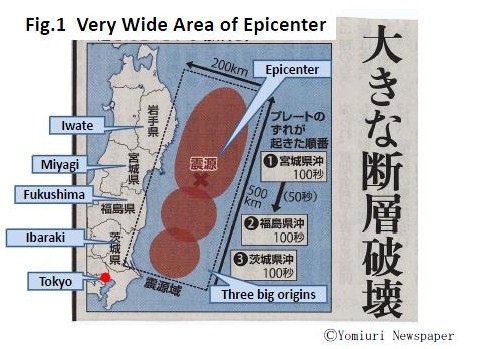
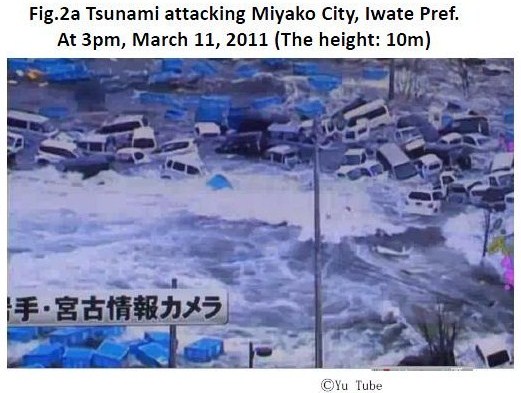
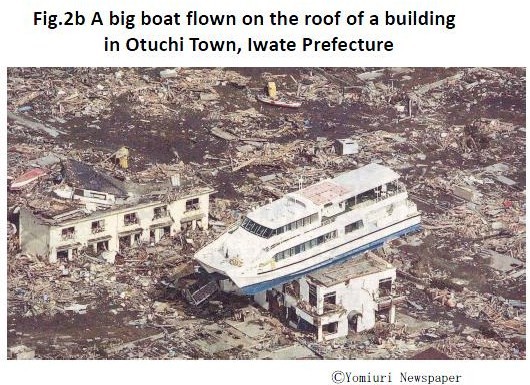
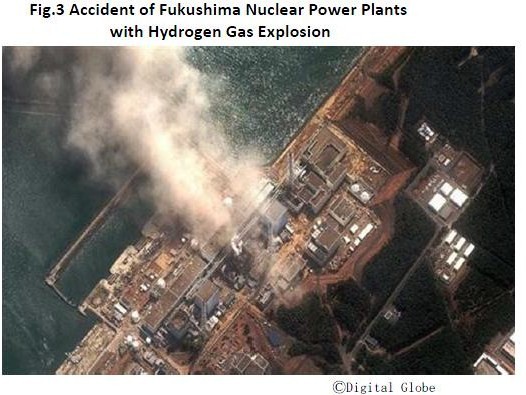



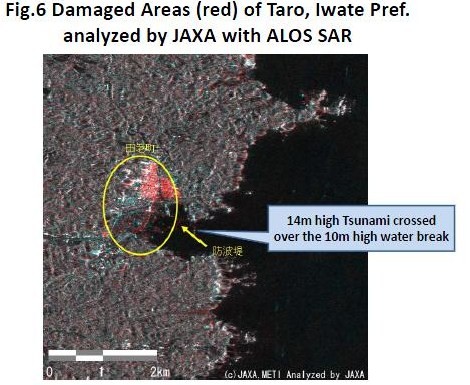












 (14 votes, average: 3.57 out of 5)
(14 votes, average: 3.57 out of 5)



Leave your response!